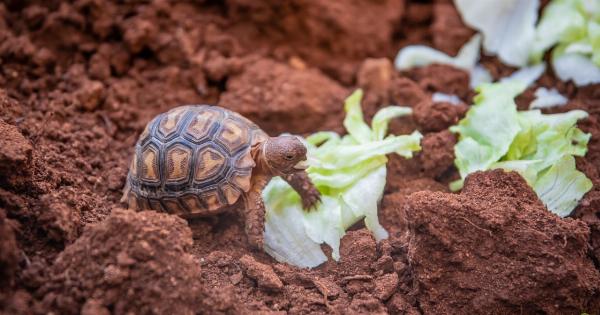When it comes to breastfeeding, finding a balance between quantity, quality, and variety is essential not only for the mother’s well-being but also for the baby’s development.
Breast milk is a fantastic source of nutrition and immune protection for infants, but it’s important to ensure that both the mother and the baby are benefiting from breastfeeding in the best possible way. In this article, we will explore various aspects of breastfeeding, ranging from finding the right balance to introducing variety into breastfeeding routines.
The Importance of Balance in Breastfeeding
Establishing a balanced breastfeeding routine is crucial for both the mother’s physical and mental health. Breast milk production is influenced by supply and demand, meaning that a regular feeding schedule helps maintain an adequate milk supply.
On the other hand, overfeeding can lead to discomfort, engorgement, and even a decrease in milk production due to improper stimulation.
A balanced breastfeeding routine not only ensures that the baby gets sufficient nourishment but also allows the mother to rest, recover, and tend to other aspects of her life.
It gives her the opportunity to engage in self-care activities, bond with her baby in ways beyond feeding, and maintain a sense of individuality.
The Role of Variety in Breastfeeding
While breastfeeding provides the perfect blend of nutrients, it’s essential to introduce variety into the baby’s diet as they grow older.
Typically, exclusive breastfeeding is recommended for the first six months of a baby’s life, but after that, complementary foods should be gradually introduced to meet the growing nutritional needs.
Introducing variety at the right time ensures that the baby receives a broader range of nutrients, helping them develop a taste for different flavors and textures.
It also contributes to the development of fine motor skills as the baby learns to self-feed with fingers or utensils and helps them become more open to new foods as they transition to solids.
Harmonizing Breastfeeding with Solid Foods
As the baby starts transitioning to solid foods, finding the right balance between breastfeeding and complementary feeding becomes crucial. Breast milk remains an essential source of nutrition even after the introduction of solids.
Continuing to breastfeed alongside solid foods can provide additional nourishment, bolster the immune system, and offer comfort to the baby during the weaning process.
One approach to balancing breastfeeding and solid foods is to offer breast milk before introducing solid meals.
This ensures that the baby receives the most critical nutrients from breast milk and that they aren’t overly full from solids, making them less inclined to nurse and reducing overall milk production.
Gradually increasing the frequency of solid meals while still breastfeeding on demand allows the baby’s digestive system to adjust and ensures a smooth transition.
Keeping an eye on the baby’s cues and being responsive to their changing needs is key to finding the right balance during this transitional phase.
Supporting the Mother’s Well-being
Breastfeeding can be an emotionally and physically demanding experience for the mother. It requires continuous dedication, time, and energy.
Therefore, it is crucial to prioritize the mother’s well-being to ensure a successful and enjoyable breastfeeding journey.
Firstly, finding a support system is essential. Whether it’s a partner, family, friends, or breastfeeding support groups, having people who can offer assistance, encouragement, and a listening ear can make a significant difference.
Taking care of oneself through proper nutrition, hydration, and rest is equally vital.
A balanced diet rich in nutrients, plenty of water, and sufficient sleep help promote milk production, maintain energy levels, and support overall well-being, both physically and mentally.
Engaging in gentle exercises and maintaining an active lifestyle, when possible, can help alleviate stress, boost mood, and improve breastfeeding outcomes.
However, it’s essential to consult with a healthcare professional before commencing any exercise routine, especially during the postpartum period.
The Art of Pumping and Storing Breast Milk
For many breastfeeding mothers, the need to pump and store breast milk arises at some point.
Whether it’s due to returning to work, time apart from the baby, or other personal reasons, understanding the art of pumping and proper milk storage is beneficial.
Using a breast pump efficiently requires practice and patience. It’s recommended to start expressing a little milk a few weeks before you plan to begin using it.
This helps in building a small stash for emergencies and familiarizes both the mother and the baby with the process.
Proper storage of breast milk is essential to maintain its quality and prevent contamination. Storing milk in clean, sterilized containers and labeling them with the date ensures that the oldest milk gets used first.
Additionally, following recommended guidelines for refrigeration and freezing temperatures helps preserve the milk’s nutrition and reduces the risk of bacterial growth.
Breastfeeding Challenges and Seeking Help
While breastfeeding is a natural and beautiful process, it can sometimes come with challenges.
From difficulties with latch and positioning to concerns about milk supply, seeking help and support can make a significant impact on a breastfeeding journey.
Lactation consultants, breastfeeding support groups, and healthcare professionals specializing in lactation are valuable resources for troubleshooting problems, clarifying doubts, and providing guidance.
They can help address issues such as sore nipples, low milk supply, mastitis, and concerns about the baby’s growth and development.
Remember, seeking support is not a sign of weakness but a testament to a mother’s dedication and commitment to providing the best for her baby. It can help turn breastfeeding challenges into opportunities for growth and bonding.
The Joys of Breastfeeding
Amidst the challenges, breastfeeding also brings immense joy and fulfillment to both the mother and the baby. The closeness, comfort, and intimacy shared during breastfeeding create a unique and irreplaceable bond between them.
Breastfeeding offers numerous emotional benefits, such as stress reduction, relaxation, and a sense of accomplishment for the mother.
For the baby, the act of nursing provides physical nourishment, emotional security, and a foundation for healthy development.
As breastfeeding continues, it adapts with the changing needs of the baby and becomes a source of comfort during illness, a way to calm and soothe, and a special time for connection in the midst of a busy day.
Conclusion
Breastfeeding is a beautiful, natural, and ever-evolving journey that requires finding a delicate balance while embracing variety.
Prioritizing the well-being of both the mother and the baby, harmonizing breastfeeding with the introduction of solid foods, seeking support, and understanding the joys and challenges can lead to a blissful breastfeeding experience for both. Remember, every breastfeeding journey is unique, and what matters most is finding what works best for you and your baby.





























